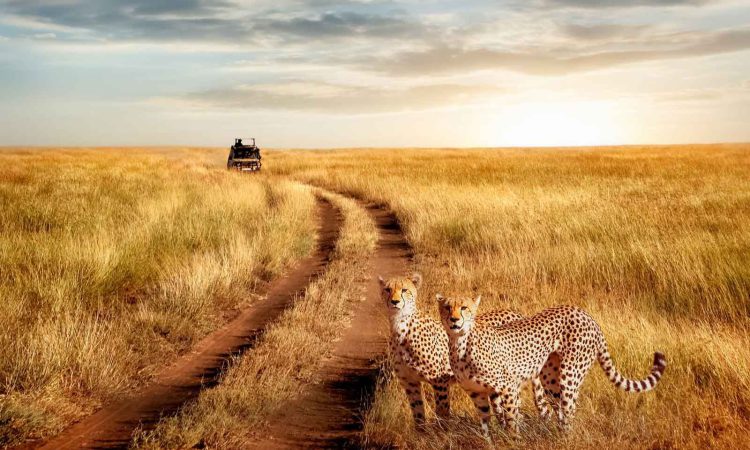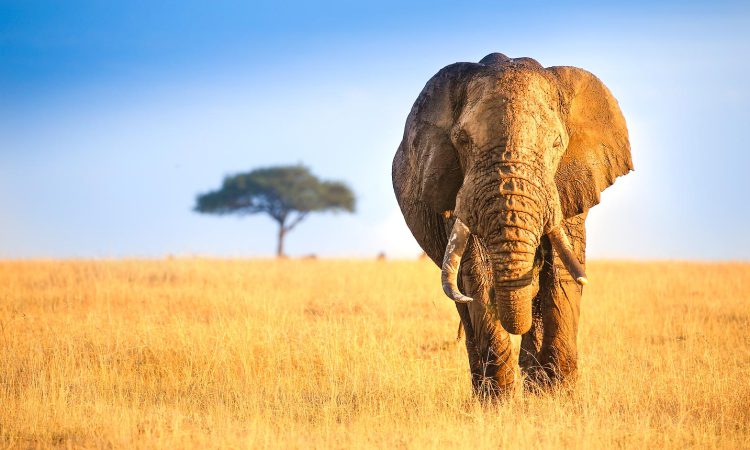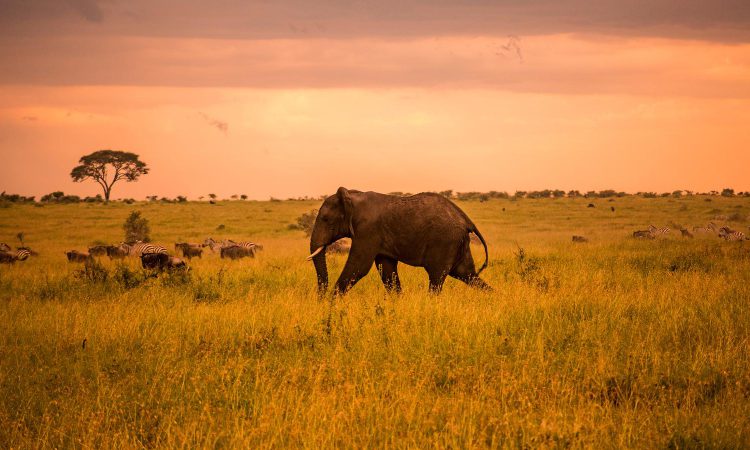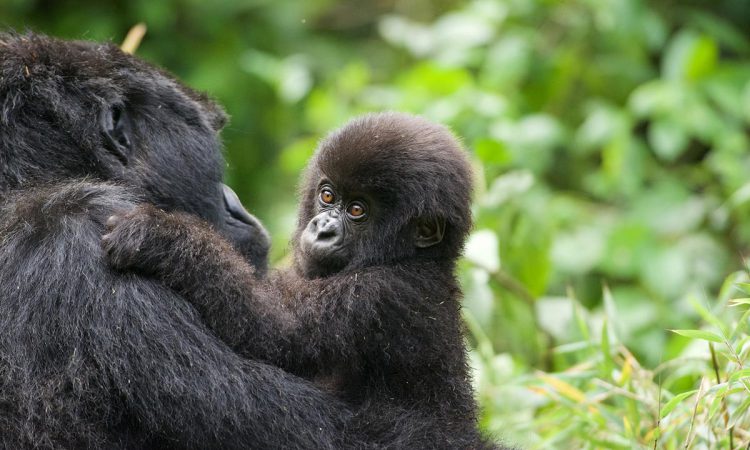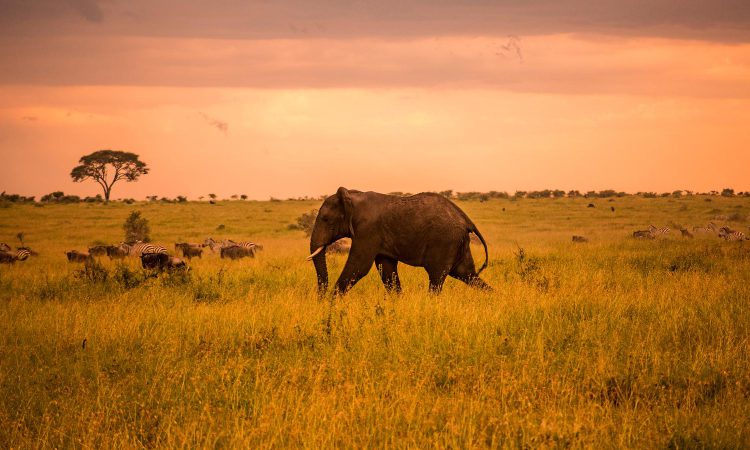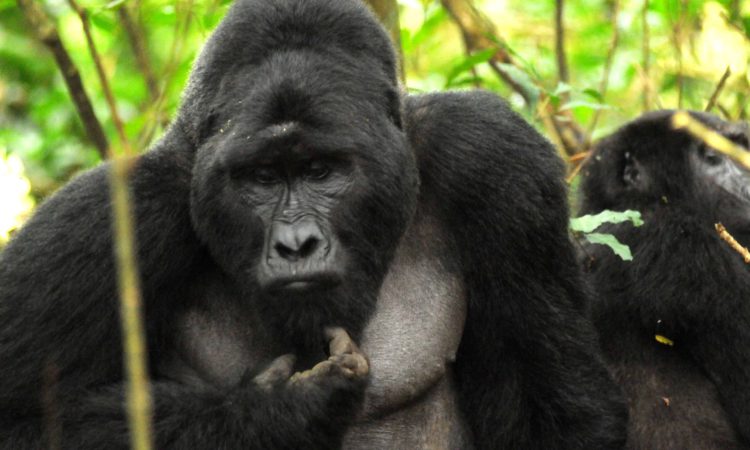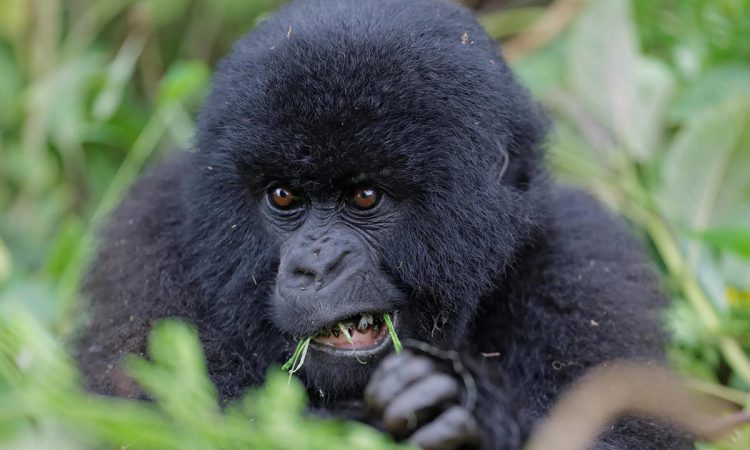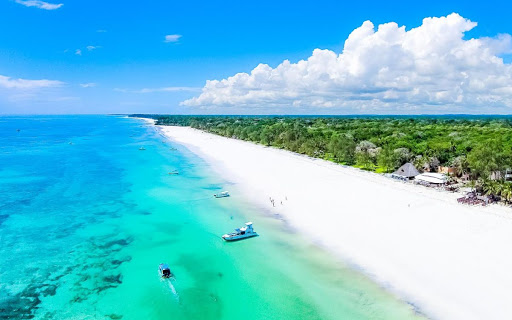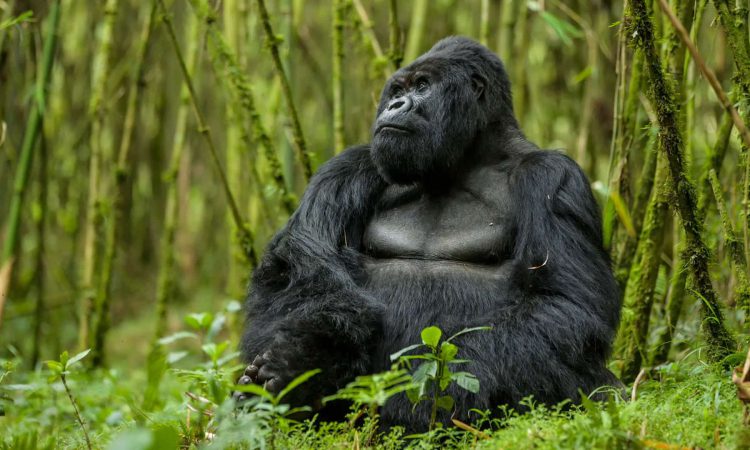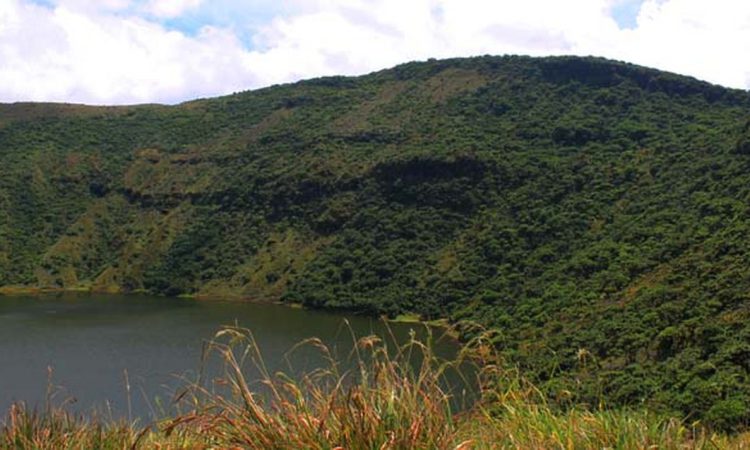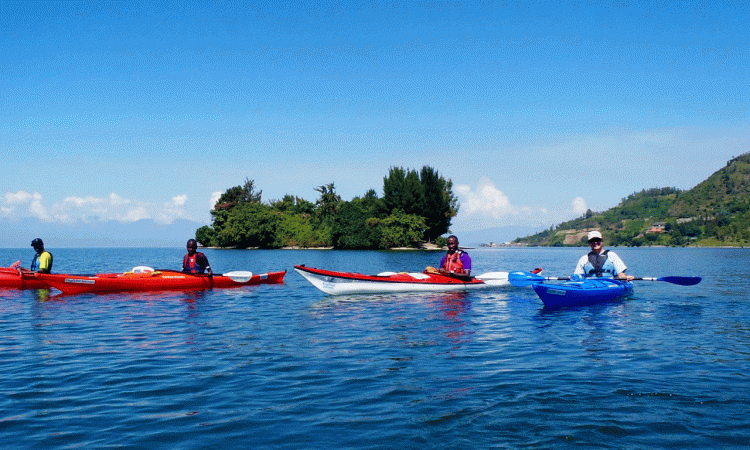East Africa is home to countries like Uganda, Rwanda, Democratic Republic of Congo, South Sudan, Kenya, and Tanzania. All these countries have a lot of uniqueness that range from history, cultures, flora and fauna. They include wildlife, water bodies, vegetation, climate, and many more. Different wildlife attractions in East Africa are located in the numerous national parks like Bwindi Impenetrable National Park, Mgahinga National Park, Queen Elizabeth National Park, Murchison Falls National Park, Volcanoes National Park, Akagera National Park, Kahuzi-Biega National Park, Serengeti National Park, Masai Mara National reserve, and Ngorongoro Conservation Area among others.
East Africa is a safari hot spot in the world as it offers incredible and captivating sites and memories. The region also shelters endangered and unique animals only found in these countries such as the mountain gorillas, wildebeest migration, chimpanzees, golden monkeys, etc. Now that you have a hint about East Africa Safaris, let us dive into the details of each destination.
Where to go – major destinations / National Parks in East Africa
Bwindi Impenetrable National Park – Uganda
Bwindi Impenetrable National Park is located in the southwestern part of Uganda bordering Democratic Republic of Congo. It was gazette in 1942 as a forest reserve but later in the year 1964 mountain gorillas were discovered in the forest reserve hence renamed Bwindi Impenetrable National Park. The park lies in the western arm of East African Rift Valley. Bwindi is well known for harboring more than half of the entire population of mountain gorillas. It has the largest concentration of mountain gorillas in the whole world.
Bwindi stands at an altitude of over 1160 meters to 2607 meters above sea level, covering an area of over 321 square kilometers. The park has an ancient rainforest that dates to as far as 25,000 years ago. This forest is very hard to navigate due to its thickness hence adopting the name impenetrable. In 1994, Bwindi Impenetrable National Park was recognized as a World Heritage Site in Uganda by UNESCO. Bwindi Impenetrable National Park in Uganda is under the control of the Uganda Wildlife Authority (UWA).
Mgahinga Gorilla National Park – Uganda
Mgahinga Gorilla National Park is located in the southwestern region of Uganda. It was established in 1991 to protect the mountain gorillas. Mgahinga covers a distance of about 33.7 square kilometers. It borders Rwanda in the south and is part of the Virunga Conservation Area.
This area stretches from Virunga National Park in Congo through Bwindi and Mgahinga in Uganda to Volcanoes in Rwanda. Mgahinga Gorilla National Park as the name suggests is famous for being a natural habitat for the endangered mountain gorillas. The mountain gorillas are considered endangered as they are only found in the Virunga Conservation Area.
Volcanoes National Park – Rwanda
Volcanoes National Park in Rwanda is part of the Virunga Conservation Area that harbors the endangered mountain gorillas. Volcanoes National Park is one of the oldest national parks in Africa. It was established in 1925 by the then-Belgian government during the colonial years. It covers a distance of approximately 160 square kilometers. Volcanoes National Park has 5 of the 8 volcanic mountains of Virunga including Karisimbi, Bisoke, Muhabura, Gahinga, and Sabyinyo.
Volcanoes National Park has about 350 mountain gorillas and up to 13 gorilla families are habituated. The park also bears the remains of Dian Fossey a well-renowned mountain gorilla conservationist who was killed in 1985. She was buried at the Karisoke Research Center where she did her work before she was killed.
Murchison Falls National Park – Uganda
Murchison Falls National Park is located in the northwestern region of Uganda. It is the largest protected area and national park in Uganda. Murchison Falls National Park was established in 1952 by the then-British government making it the oldest national park in Uganda. The park is home to over 144 mammal species, 480 bird species, and 51 reptile species.
The park was originally named Kabalega National Park but when Sir Samuel Baker and his wife visited the park, they were amazed by the waterfalls and renamed Murchison Falls National Park. It was named after the president of the Geography Society of the British Robert Murchison. The park covers about 3,893 square kilometers covering four districts. These districts include Masindi, Buliisa, Kiryandongo, and Nwoya. The park is home to the world’s strongest waterfall the great Murchison Falls. The power and sheer will of this great force of Mother Nature has attracted visitors across the globe to come and witness Mother Nature’s art piece, the Murchison Falls.
Akagera National Park – Rwanda
Akagera National Park is named after the River Kagera that flows on Rwanda’s border with Tanzania. It is located in the eastern region of Rwanda covering about 1,112 square kilometers. It is the only savannah national park in the country and was established in 1934 by the Belgian government. Akagera National Park harbors a variety of wildlife species including the big 5 animals that is lions, leopards, buffaloes, elephants, and rhinos.
There are other animals also like hyenas, antelopes, and many more. It also harbors over 480 bird species with 44 raptor species and Zambezian biome species. The park was gazette by the then-Belgian government to conserve the flora and fauna in the park.
Virunga National Park – Congo
Virunga National Park is located in the southeastern region of the Democratic Republic of Congo. It was established in 1925 and is among the oldest conservation areas in Africa. The park lies in the eastern arm of the Albertine Rift Valley. It covers a distance of over 7,769 square kilometers and stands at an altitude of over 5,109 meters above sea level. Virunga National Park harbors rare flora and fauna species including the endangered mountain gorillas and thus it was named a UNESCO site in 1994. The park is home to the two active mountain volcanoes of Nyiragongo and Nyamuragira.
The park has diverse flora and fauna that have made the park their permanent home. A visit to Virunga National Park will bring you closer to nature and give you everlasting memories and a story to tell.
Masai Mara National Reserve – Kenya
Masai Mara National Reserve is found in Kenya along the border with Tanzania. Masai Mara was established in 1961 shortly before the independence of Kenya. It covers a distance of about 1,510 square kilometers. The Masai Mara National Reserve is mainly covered by the savannah grassland plains with scattered woodlands. The reserve is drained by the great Mara River and Talek River. Masai Mara National Reserve is home to animals like lions, elephants, cheetahs, buffaloes, zebras, hippos, crocodiles, and wildebeests among others.
The major activity in Masai Mara is observing the great wildebeest migration that sees millions of wildebeest cross the dangerous Mara River infested with hungry and dangerous Nile crocodiles to Serengeti. Witnessing this incredible journey of survival for the fittest in this game of nature will forever live with you.
Serengeti National Park – Tanzania
Serengeti National Park is located in the northern region of Tanzania close to the border with Kenya. It was gazette in 1951 by the colonial government and covers a distance of about 14,763 square kilometers. Serengeti National Park is home to the big 5 animals of the African savannah that is lions, leopards, elephants, buffaloes, and rhinos. Serengeti dips with a variety of wildlife species including about 1000 leopards, 4000 lions, 5000 elephants, 550 cheetahs, over a million wildebeests, and many more.
Serengeti was named a UNESCO site since it conserves large numbers of wildlife species. The great wildebeest migration is the major attraction of every year as it sees huge volumes of wildebeests cross from the northern region of the park to the southern region in search of fresh pastures. Serengeti National Park is worth visiting while on a safari tour in Africa as it is the best wildlife sanctuary and the world’s top wildlife safari destination.
What to see and do in East Africa? – Attractions and Activities.
The Great Wildebeest Migration
The great wildebeest migration is every visitor’s dream because you get to observe a world wonder of the largest wildlife migration of its kind. This is the time when wildebeest start their journey from Masai Mara National Reserve in Kenya following the rains to Serengeti National Park in Tanzania in search of fresh pastures. This is the most stressful period of any wildebeest in their entire life as it tests their fitness ability by putting their life on the line. The wildebeests start their migration in the Masai Mara National Reserve and follow the rains to the south.
They cross the dangerous Mara River which is infested with dangerous Nile crocodiles. This is the most challenging part of this migration as many are killed by the Nile crocodiles and others are trampled on. The strong water current of the river claims more wildebeests as they are washed and drowned downstream. Other than the Mara River, other wildebeests are attacked and killed by other predators on the banks of the river such as lions and leopards.
Although thousands of wildebeest dead in the process of crossing the great Mara River, millions make it across the Serengeti-Mara ecosystem to the south in Serengeti National Park for fresh pastures. Many more are born to replace the ones lost in the crossing as they wait to repeat the process back to Masai Mara in the north as the next season of the rains moves. Observing this great migration on an East Africa Safari is indeed a dream come true for the visitors.
Mountain Gorillas
Mountain gorillas are called mountains because they live in mountainous areas and cool conditions. Mountain gorillas are endangered primate species only found in the Virunga Conservation Area. This area covers areas of Virunga National Park in D.R. Congo, Bwindi Impenetrable and Mgahinga Gorilla National Parks of Uganda, and Volcanoes National Park in Rwanda.
Bwindi Impenetrable National Park is the epitome of any mountain gorilla destination in the world since it holds half of the entire world population. Mountain gorillas in Bwindi can be spotted while on an African safari experience. The mountain gorillas in the park live in groups known as gorilla families. Bwindi Impenetrable National Park has over 50 gorilla families in total. Gorilla families are headed by a male gorilla known as Silverback. It is called a silverback as it has a silver hair on its back. However, the national park has up to 24 gorilla families that are habituated and available for visiting. Some of these families include Habinyanja Gorilla Family, Rushegura Gorilla Family, Bitukura gorilla family, and Mubare gorilla family, among others.
Other attractions in Bwindi Impenetrable National Park include bird species which are over 350. Among these, 14 species are rarely seen anywhere else in the country and there are also 23 of the 24 Albertine Rift Valley species. These bird species and more can be spotted while on a birding safari in the park.
You can also visit the Batwa communities around the park. The Batwa are one of the oldest ethnic groups in Africa. These people lived in the park for a long time before it was gazette in 1942. Their survival skills and way of life are worth checking out while on a gorilla safari experience in Bwindi Impenetrable National Park.
Mgahinga Gorilla National Park has only one gorilla family, Nyakagezi Gorilla Family. It is the only family available for trekking in this park. These primates are interesting to visit as they share 99% of our DNA and thus are pretty much like us. Spending some time with these endangered mountain gorillas will leave you amazed at how they do some activities like humans such as caring for their young ones.
Other attractions in Mgahinga Gorilla National Park include bird species which are more than 178 species that call the park their home. Mammal species such as the giant forest hogs, bush pigs, and others. The park also has Garama caves which are worth checking out and learning the ancient history that surrounds them.
Volcanoes National Park.
Volcanoes National Park has approximately 380 gorillas that live in groups known as gorilla families. They are headed by a strong male called a silverback. Volcanoes National Park has about 12 habituated gorilla families available for trekking. Some of the habituated families include the Kwitonda, Agashya, Amahoro, Sabyinyo, Agashya, and Umubano gorilla groups among others.
Other attractions in Volcanoes National Park include the bird species that are about 180 including 17 of the 25 Albertine endemics of the Rift Valley. Some of the bird species include the Archer’s ground robin, Rwenzori double-collared sunbird, Rwenzori turaco, and dusky crimson-wing, to mention but a few. Golden monkeys that are about 80 in number can also be spotted in the park. Venture on a gorilla exhibition in the park and you will have an experience of a lifetime.
Mountain Gorilla trekking safari.
Mountain gorilla trekking can be done only in Africa, within the Virunga Conservation Area, in national parks like Bwindi, Virunga, Mgahinga, and Volcanoes national parks. Gorilla trekking is the major activity in these national parks, and it involves moving through the thick vegetation on foot with an armed ranger guide on a search for endangered mountain gorillas.
The process of gorilla trekking always begins with a briefing about the rules and regulations of this adventure at the park offices. This is intended to protect both gorillas and the visitors.
After traversing through the lush forests, trekkers are given an hour to spend in the presence of a habituated gorilla family.
Gorilla Habituation Experience.
Gorilla Habituation is similar to mountain gorilla trekking however for it visitors get to spend more time with these primates, up to four hours. Mountain gorilla habituation is normally carried out by researchers but also adventure enthusiasts who are interested in spending more time with the mountain gorillas. Spending some quality time with these primates while on a safari tour in East Africa will surely leave you with unforgettable memories.
Chimpanzee Trekking.
Chimpanzee trekking is another highly anticipated activity on East Africa Safaris. Chimpanzees in East Africa can be found in Nyungwe forest in Rwanda, Kyambura Gorge, and Budongo forest in Uganda. There are over 5,000 chimpanzees in Uganda, and about 350 chimpanzees in Rwanda. Chimpanzee trekking involves walking through the forests in search of the chimpanzees.
With the help of an experienced guide ranger, the process of locating the chimpanzees’ habitats will not take very long. Just like mountain gorilla trekking, chimpanzee trekking also takes an hour after the chimpanzees are located. This hour you spend in the presence of these primates is surely worthwhile as get to learn and observe them eat and do their daily chores. Trekking of chimpanzees in East Africa is done in Kyambura Gorge, Budongo Forest, and Kibale National Park in Uganda, and Nyungwe forest in Rwanda.
Big Game Safaris.
Queen Elizabeth National Park, Murchison Falls National Park in Uganda, and Akagera National Park in Rwanda are some of the many places to have a big game safari. These parks are home to the big 5 animals that many visitors look forward to in anticipation of seeing while on a safari experience. These big 5 animals include lions, leopards, buffaloes, rhinos, and elephants.
Other than the big 5, there are also animals like hyenas, cheetahs, antelopes, giraffes, warthogs, and many more. All these animals can be observed while on a game drive in the parks in the comfort and safety of your vehicle. You will come near these animals and watch them hunt, graze, and rest on the savannah plains of these parks. These big game safari experiences will give you incredible memories to carry along.
Boat Cruise.
The boat cruise is mainly done on the lakes and rivers that are located in the national parks such as Kazinga Channel in Queen Elizabeth and Victoria Nile in Murchison Falls National Parks. A boat cruise involves touring the waterbodies and observing the aquatic animals that rule the waterside.
The boat cruise will introduce to you several animals like hippos, crocodiles, and also other animals like buffaloes, elephants, and waterbucks that flock to the shores for a drink and cool off. A boat cruise gives you the best safari experience especially during the hot afternoon days of the dry season when most animals come for a drink at the waterbody.
Golden Monkey Trekking.
Trekking of golden monkeys in East Africa is done in Mgahinga Gorilla National Park in Uganda and Volcanoes National Park in Rwanda. Golden monkeys just like their cousins, mountain gorillas are very rare to spot. They live in mountainous areas in the bamboo forests of Mgahinga and Volcanoes National Parks. They are called golden because they have golden hair on their cheeks. After a pre-trekking briefing, visitors are guided through the forests to the habitats of these monkeys.
This briefing is mainly about the expected code of conduct while trekking and in the presence of the monkeys. Visitors are given an hour with the monkeys and they get to observe them as go by with their daily chores and learn their behaviors. This golden monkey experience of the East Africa Safaris is worth checking out.
What is the best time to visit East Africa?
East Africa mostly experiences two dry seasons and two wet seasons in a year. The best time to visit East Africa and exhaust the best out of it is during the dry season. This is the period when most of the wildlife is easily spotted. The dry season tends to draw most of the game closer to the waterbodies. It is during this season that the great wildebeest migration takes place where the wildebeests escape the dry conditions and follow the rains south. The dry season also favors trekking of gorillas, chimpanzees and golden monkeys.
This is because during this season the vegetation is clear and passable. The dry season starts from mid-June to October and from December to February.
The wet season however has its own advantages also as the parks are not crowded with a lot of visitors. It is during this period that most accommodation facilities low their prices and hence prefect for budget travelers. Some activities like birding are best done during this period because some rare bird species can only be spotted during the wet season. Therefore, any season is the best time visit East Africa depending on the activity and range and visitors is interested in.
Facts about safaris in East Africa.
East African region is the world’s best safari destination. It has some of the biggest national parks with diverse wildlife species. The following are some of the facts about safaris in East Africa.
- The great wildebeest migration happens in Masai Mara – Kenya and Tanzania’s Serengeti national park as millions of wildebeests, zebras, and gazelles follow the rains southwards. This is the largest wildlife migration on earth. It was once listed as a world wonder.
- East Africa is the only place in the world where you can find endangered mountain gorillas. These gorillas are only located in Bwindi Impenetrable national park and in Virunga Conservation Area, which covers national parks like Virunga in DRC, Mgahinga in Uganda, and Volcanoes National Park in Rwanda.
- East Africa is the only place in the world to spot big 5 animals in the wild. These animals include lions, buffaloes, leopards, elephants, and rhinos.
- East Africa has rich cultures and traditions with over 100 different tribes. The Batwa pygmies are one of the oldest ethnic groups in the world and are found in the Virunga Conservation Area of East Africa. Masai people in Kenya and Tanzania known for their strong warrior traditions are also present in the region.
- East Africa harbors over 15,000 bird species making it a birders’ paradise. Birders from far and wide flock to the region for an opportunity to spot the hidden treasures of bird species of East Africa.
Cost of East African Safaris.
The cost of East Africa Safaris varies according to the activity and destination one is going to. Different national parks across the region have different entrance fees they charge and also activities to engage in while in the park.
For instance, the cost of gorilla trekking in Uganda varies from that of Rwanda. The gorilla permit in Uganda goes for 800 US Dollars per person, Rwanda gorilla permits cost 1,500 US dollars per person.
The cost of game safaris in Masai Mara National Reserve in Kenya range from 200 US Dollars per person to 400 USD depending on the season, while in Serengeti National Park, it ranges between 150 – 250 US dollars per person per day. These costs also vary according to nationality. East African citizens are charged less compared to their international counterparts.
All in all, East Africa Safaris are afforded and the money collected by the bodies that govern these national parks is used for conservation efforts for the wildlife. So as you pay to watch these animals and engage in the activities, you are making a huge positive step towards conservations.
East Africa Safari Weather.
The East African region experiences different weather conditions of hot and wet seasons across the year. The region around the equator experience equatorial climatic conditions and the other areas further from the equator experience a mixture of tropical, arid and semi-arid conditions.
East Africa experiences two dry and two wet weather seasons every year. The dry seasons begin mid-June to October and from December to February. Between these dry seasons there is the wet season. However, due to change in temperatures brought about by global warming, the weather in East Africa tends to be unpredictable and can rain heavily in the dry season or sun strongly in the wet season.
East Africa Safari Clothing.
When preparing to take on a safari in East Africa, one needs to be very conscious about the weather. As mentioned earlier, East African weather can sometimes be tricky and unpredictable. Because of this one needs to be prepared at all times. The following are some of the gear or clothing needed for East Africa Safari.
- Khaki trousers. These are hard and flexible and very good in walking and during trekking activities.
- Jungle boots. These are necessary especially for most of the activities like trekking and nature walks as they are hard and have a rough texture down for easy navigation.
- Long-sleeved shirts. These shirts protect you from the thrones and the bites of small insects why traversing through vegetation.
- T-shirts or lightweight clothes or tops. These are favorable during dry seasons as it tends to be very hot and dry.
How long should your East Africa safari be?
Taking on a safari experience in East Africa depends on many factors but the most important is the budget for your trip. East Africa has a lot of destinations and activities to engage in so it is important to plan for some good days in order to exhaust the moments. The following are some of the factors you should put at the back of your mind while planning your safari.
- East Africa has a variety of activities like game viewing, trekking, boat cruise, and many others so planning for a safari one should look at the activities of interest.
- Period of Travel. Length of the safari in East Africa depends on the period or season one is to travel. Each season brings its challenges that would require some more time to explore.
- This is the most important factor as it determines the time to spend on a safari, activities to do and destinations to visit.
There are many other factors that determine how long East Africa Safari should be. However, about 7-10 days are advised as they are significant to exhaust the diverse wildlife species and activities in the region.


